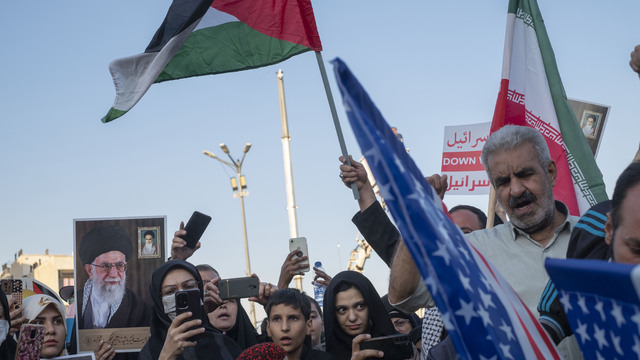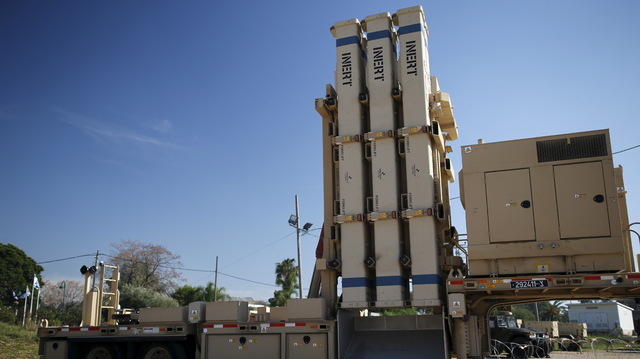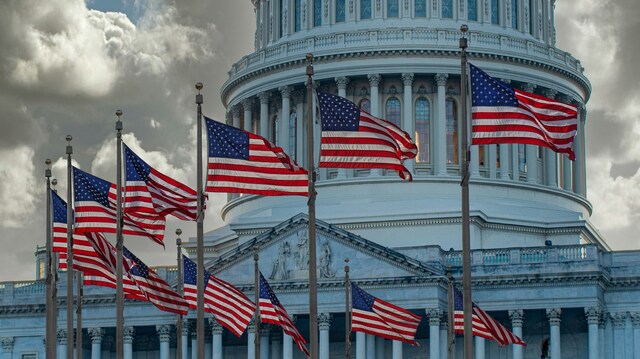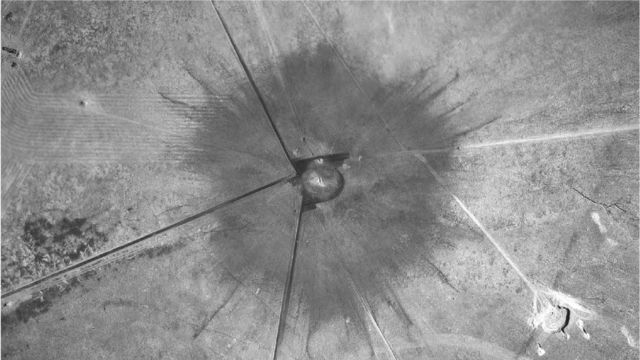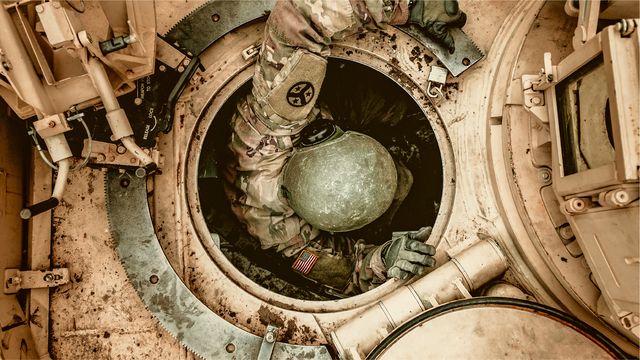THE CRUCIAL AND FATEFUL NUCLEAR-ARMS DILEMMA
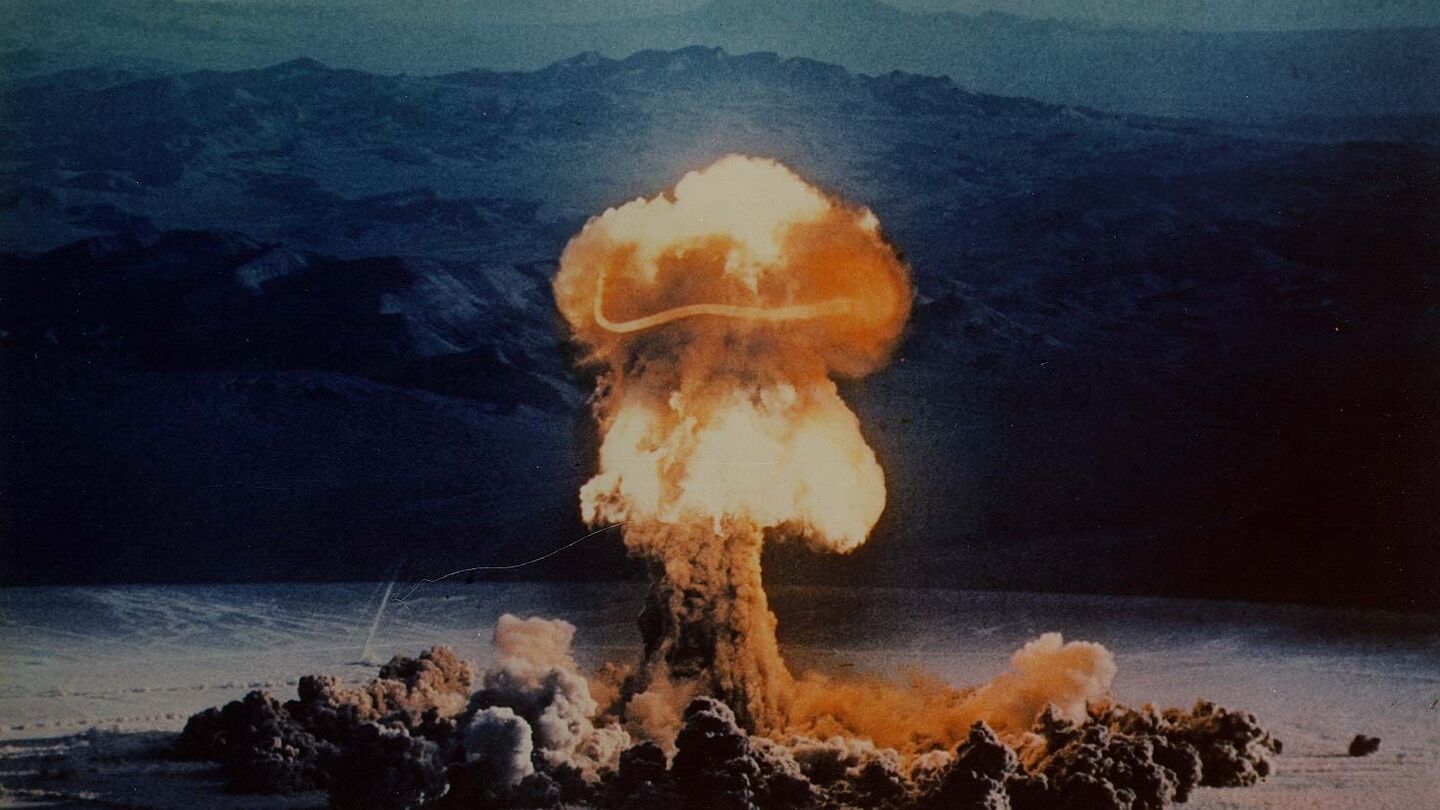
Nuclear weapons are an existential threat to humanity, as are the increasingly intense manifestation of climate change. The Reflection describes more broadly the main risk factors of this threat, including artificial intelligence (AI).
In this context, it highlights the impasse that the US-Russian arms control process and strategic dialogue have reached as a result of their strained relations and the ongoing war in Ukraine. It also analyses the expected developments in the nuclear weapon field, taking into account the US Pentagon’s warning about the possible growth of China’s nuclear arsenal. In particular, it concludes by noting the main dilemmas for further development in this area: either the initiation of arms control and risk reduction negotiations by the major nuclear powers or the growing spiral of a costly and security-risk-laden nuclear arms race. The possibility of an ethical and moral commitment by the five permanent members of the UN Security Council, the so-called P5 (the US, Russia, China, France and the UK), to “responsible nuclear behaviour“, which is promoted by the US administration, appears as a temporary solution to this security crisis.
RISK THREATS OF NUCLEAR WEAPONS USE
Nuclear weapons are classified as weapons of mass destruction. Unlike the other two similar kinds of weapons, i.e. chemical and biological (bacteriological) weapons, they have enormously higher destructive effects. They not only destroy life and material assets, but also devastate and contaminate the environment in the long term.
The main physical effects of a nuclear weapons explosion are a thermal flash, high heat developing into firestorms, a blast wave, intense radiation, an electromagnetic impulse disabling electronic equipment and long-term radioactive contamination. It is estimated that in the event of a nuclear war, the debris and soil ejected into the atmosphere would form a barrier to the sun’s rays and a “nuclear winter“ would occur. The result would be a collapse of the global economic system and a subsequent famine, which would be compounded by a contaminated environment.
The explosive power of the nuclear warheads deployed on the strategic carriers of the so-called nuclear triad (land, air, and navy forces), with a range of over 5,500 km is reported to be in the millions of tons of conventional trinitrotoluene explosive (TNT) equivalents. These carriers can carry several warheads, and about 2,000 of these weapons are in a state of high alert, which means that the time for their launching can be calculated in minutes. The two US atomic bombs dropped on the Japanese cities of Hiroshima and Nagasaki on 6 and 9 August 1945 had an explosive power of several thousand tons of TNT (the “Hiroshima” bomb had the power of about 15 kt of TNT). The devastating effect of their explosions was about 200,000 casualties and the total destruction of both cities. If megaton bombs were used, the casualties would probably number in the millions.
Yet a nuclear explosion or an imminent threat of nuclear weapon use can occur even without the outbreak of a nuclear war. History knows of many examples where, as a result of technical failure, human error or misinterpretation of an adversary’s behaviour, a nuclear tragedy with unimaginable consequences could have occurred relatively easily.
Nuclear military accidents are registered in the U.S. under the code word “broken arrows“. For example, in the 1960s and 1970s, there were several crashes of U.S. B-52 strategic bombers, often involving in-flight refuelling. In this context, several hydrogen bombs with megaton charges were released, but they were fortunately prevented from exploding on impact by a fuse system. This happened, for example, in 1961 near the North Carolina town Goldsboro, and a few years later in Palomares (Spain), where three H-bombs fell on land and one in the Mediterranean Sea.
In the then-Soviet Union, there were several tragic nuclear submarine fire accidents. The 1983 case of the Soviet operator officer Stanislav Petrov is also well known. His discretion prevented the launch of Soviet strategic missiles at U.S. targets after early warning systems, due to a technical malfunction, wrongly reported a US attack. In 2014 the story was made into a film by the Danish director Peter Anthony under the title “The Man Who Saved the World”.
The so-called Cuban Missile Crisis of 1962, often referred to as the worst crisis in the U.S.- Soviet relations, as it threatened the outbreak of a nuclear war, fortunately, ended with the signing of a compromise agreement. In connection with it, the Soviet Union withdrew its nuclear weapons from Cuba and the U.S. promised not to invade Cuba and to withdraw its nuclear weapons from Turkey and Italy. The crisis contributed to the negotiation of the International Nuclear Non-Proliferation Treaty (NPT). The two rivals also established crisis communication channels, initiated arms control talks in the 1970s to reduce the number of deployed strategic weapons (SALT), and concluded the Anti-Ballistic Missile Treaty (ABM). The ABM Treaty’s significance, besides its significant limitation of anti-missile systems, lay primarily in the fact that it de facto precluded the signatories from conducting a first strike. In such a case, the first strike would result in “mutually assured destruction” due to the possibility of a huge retaliatory strike, facilitated by the limited missile defence systems. In 1973, the two powers also concluded a significant agreement on the prevention of nuclear war (US-Soviet Agreement on the Prevention of Nuclear War).
ARTIFICIAL INTELLIGENCE (AI) AND NUCLEAR WEAPONS
In the context of today’s rapid technological development and in particular that of AI, experts working in this field, and various non-governmental groups and international organizations expressed concerns about the potential negative impacts of AI on global security, strategic stability and nuclear risk reduction. So-called machine learning and the autonomous domain are seen as particularly worrying aspects, as they point towards the possibility of removing human control from autonomous weapon systems.
For example, in June 2020, the Stockholm International Peace Research Institute (SIPRI) published a brochure titled Artificial Intelligence, Strategic Stability and Nuclear Risk. In April of this year SIPRI, in collaboration with the UN Department for Disarmament Affairs (UNODA), also launched a three-year joint initiative on responsible innovation in AI for peace and security. The security implications of the use of AI are also being addressed by NATO, whose defence ministers approved NATO Strategy on AI, in October 2021. In addition to describing the objectives of the Strategy, the document sets out, among other things, the Alliance’s principles of the responsible use of AI.
In terms of the threat of misuse of nuclear weapons, AI thus poses a serious challenge. A set of cautionary insights was obtained by my entering a query about the aforementioned risks of AI algorithms on the website https://chat.openai.com/. In principle, they correspond to the concerns of various AI experts.
With the development and creation of automated nuclear weapons systems with the help of AI, the human factor could be removed from the decision-making process on the use of nuclear weapons. Such autonomous systems would be capable of making their own decisions, i.e., they would be able to identify targets and conduct nuclear attacks independently. However, possible programming errors or misinterpretation of the situation could increase the risk of an unauthorised or inappropriate use of these weapons.
Another threat is the dependence on information technology and network security. Software flaws and inadequate protection against cyber-attacks could contribute to the possible possession of nuclear weapons by unauthorised actors. If hackers successfully penetrate the nuclear weapons command and control system, these actors would gain control of these weapons and their detonation. Thus, an unintended detonation of nuclear weapons could occur by someone mimicking an authorised signatory or falsifying trusted information. Possible uncontrollable behaviour of nuclear weapon systems, caused by, e.g. algorithm errors or technical failures, could also be the result of dependence on AI.
THE CONTROVERSIAL NUCLEAR DETERRENCE CONCEPT AND THE NUMBER OF NUCLEAR WEAPONS
The possession of nuclear weapons derives from the concept of nuclear deterrence, which is based on the threat of a retaliatory strike in the event of an attack. This is a controversial concept that has its supporters and opponents. In particular, the supporters stress the “peace-keeping role” of the concept, as it prevents the outbreak of a nuclear conflict and a third world war. The opponents, on the other hand, argue by pointing to the lack of proof for this claim and stress its decisive role in nuclear proliferation and as a major obstacle to the goal of nuclear disarmament. They document the ineffectiveness of the concept by using some examples of armed conflicts in which non-nuclear states initiated armed action against nuclear countries. Among the examples they cite are the so-called Yom Kippur War fought by Egypt and Syria against Israel in 1973, and the British-Argentine conflict over the Falkland (Malvinas) Island in 1982.
The SIPRI Yearbook 2023 estimates, among other things, that as of January 2023, there were 12,512 nuclear warheads in the possession of nine nuclear-armed countries (the US – 5,244, Russia – 5,889, France – 290, China – 410, the UK – 225, India – 164, Pakistan – 170, Israel – 90, and the DPRK – 30). There were 3,844 nuclear warheads in operational deployment, i.e. either on or near delivery systems (the US – 1,770, Russia – 1,674, France – 280 and the UK – 120). The remaining numbers of these countries’ nuclear warheads are in storage and in the case of the US and Russia, ready for dismantlement (the US – 1,536 and Russia – 1,400).
THE US-RUSSIA ARMS CONTROL RELATIONS
Following the Republican administration's unilateral withdrawal from the ABM Treaty (under George W. Bush Jr. in 2001) and the withdrawal from the Intermediate and Shorter Range Missile Treaty (INF) by President Donald Trump in 2019, only the last bilateral arms control treaty, the 2010 New START Treaty, remains in force.
The New START Treaty set limits for both countries’ numbers of nuclear warheads (max. 1,550) operationally deployed on strategic delivery vehicles (land, air and navy), as well as for the numbers of these delivery vehicles (max. 700) and deployed and non-deployed launchers (max. 800). The ten-years period of the validity of the treaty, during which both countries fulfilled their commitment, was extended by five years in 2011. However, the subsequent negotiations on its replacement, in the framework of the so-called Strategic Dialogue, were terminated following the launch of the Russian aggression against Ukraine in February 2022 and then significant deterioration in US-Russia relations. Russia also suspended its obligations under the treaty verification system in February of this year, reinforcing fears of a complete collapse of the US-Russian arms control process. Despite the suspension, however, the Russian side intends to continue to comply with the aforementioned treaty limits and provide notifications of any launch of intercontinental land and sea-based ballistic missiles under the 1988 US-Soviet agreement.
According to an assessment by Daryl G. Kimball, the executive director of the U.S. Nongovernmental Arms Control Association (ACA), the situation is not entirely hopeless. He recalled the National Security Adviser Jake Sullivan’s address to the ACA annual meeting in early June of this year, in which he expressed “the readiness of the United States to engage in arms control diplomacy with Russia and the other nuclear weapon states of the Nuclear Non-Proliferation Treaty (NPT) without preconditions”. In the context of the upcoming expiration of the New START Treaty Sulivan said that the US considers it more useful not to negotiate with Russia on contentious bilateral issues now, but to rather focus on the nuclear risk area and the preparation of a post-2026 arms control framework. In a subsequent response, the Kremlin spokesman Dmitry Peskov confirmed Russia’s interest in a dialogue with the US on arms control issues. He described the proposal as “important and positive“ while expressing the need for its clarification. Sullivan also reported President Biden’s support for a “new multilateral arms control effort” involving the nuclear weapon countries of the so-called P5, which are also the NPT’s State Parties. In this context, Sullivan proposed that the P5 agree to greater transparency about nuclear doctrines, the creation of more effective crisis communication channels, as well as common rules for missile launch notifications and the implementation of policies aimed at maintaining the human factor in the areas of command, control and use of nuclear weapons. In this context, Kimball in an article cited a reaffirmation of or even a possible actualization of certain passages from the aforementioned 1973 US-Soviet Agreement on the Prevention of Nuclear War as a possible appropriate initiation of “responsible nuclear behaviour”.
The new approach to arms control is the subject of an article of the same name by Ulrich Kühn and Heather Williams, published on 14 June in the magazine Foreign Affairs. In it, the authors recall, among other things, that already at the G7 summit of the most industrialized Western countries in Hiroshima in May 2023, the participants pledged to promote “responsible nuclear behaviour”, including measures to reduce nuclear risk and provide greater transparency about nuclear arsenals. The article further discusses the reasons for the existing arms control impasse and concludes with the need to adopt the proposed interim measures to reduce nuclear risk and prevent nuclear war.
THE ESTIMATED DEVELOPMENT OF THE CHINESE NUCLEAR CAPACITY
The Pentagon’s November 2022 annual report to the U.S. Congress projects a significant strengthening of China’s nuclear arsenal in the coming years. The estimated increase in the number of nuclear warheads is expected to reach 1,000 pcs by the end of the decade and 1,500 by around 2035. Another signal of China’s nuclear ambitions is the construction of three vast fields of missile silos for land-launched intercontinental ballistic missiles (ICBMs).
It is envisaged that in the silos there could be about 350 deployed ICBMs, each capable of carrying multiple nuclear warheads, similar to analogous US and Russian missiles. The expansion of China’s nuclear capacity is reportedly evidenced by the construction of plants for reprocessing spent nuclear fuel to produce plutonium, the construction of reactors that are apparently not destined for civilian power grids, and the reconstruction activities at the Lop Nor nuclear test site. The deepening of the Chinese-Russian nuclear cooperation is also
a concern. This issue was described also in an article published in the New York Times on April 19, 2023. The authors claim, among other things, that the urgency of the problem has been documented by the creation of a panel of experts at the U.S. State Department earlier this year with the task of preparing recommendations for dealing with the problem within 180 days.
CONCLUSIONS AND FURTHER EXPECTED DEVELOPMENTS
The current estimated total number of nuclear warheads around 12,500, compared to the approximate number of about 60,000 nuclear weapons at the height of the Cold War – may look very optimistic. However, the reality is that all nine nuclear weapon states continue to modernize their nuclear warheads and delivery systems, and the explosive power of these weapons could probably destroy human civilization several times over. All the nuclear weapon states, as part of their dependence on the concept of nuclear deterrence, continue to refuse to accede to the Treaty on the Prohibition of Nuclear Weapons (TPNW). As regards the P5 nuclear weapon states they do not responsibly implement their obligations under the agreed action plans of several NPT’s Review Conferences. As a result, the credibility of the NPT continues to decline.
AI poses a growing and enormous threat, in terms of various risks of misuse of nuclear weapons. The risk is compounded by its interconnectedness with possible autonomous weapon systems and cyber-attacks against nuclear command and control sites.
It is very likely that until the war in Ukraine ends, and there is thus an improvement in the US-Russia relations, there will be no resumption of the bilateral strategic dialogue. Thus, strategic stability, transparency, deepening of the confidence-building measures, nuclear risk reduction, predictability and the threat of a nuclear arms race, are all at stake. With regard to China’s nuclear arsenal, the Pentagon estimates that the US will face a new strategic situation in the 2030s. The pressure for stability will reportedly build, and the new situation will present challenges for deterrence, arms control, and nuclear risk reduction.
At issue is how the global nuclear order will continue to evolve with the aforementioned challenges and, in particular, with the expiration of the last US-Russian arms control treaty, the New START, in February 2026. The Chinese leadership characterizes its nuclear strategy as moderate and responsible. It proves it with its estimated 410 nuclear warheads that are reportedly not currently in operational deployment, and its several-year´s official policy of no-first use of nuclear weapons. Given the disproportion in the numbers of its nuclear warheads and those possessed by the US and Russia, it refuses to engage in arms control negotiations until the aforementioned countries reduce their arsenals to the appropriate level of the other three P5 states.
To advance the Biden administration’s proposal for “responsible nuclear behaviour” as a bridging option in the absence of arms control efforts, Kimball said that pressure should be generated by non-nuclear states and civil society on the P5 nuclear powers to meet that intent.
Despite the appreciation of the above-mentioned efforts of the US administration to temporarily address the security crisis, it is necessary to recall the main deficiencies of the proposal. If all the P5 countries agree to the proposal, probably in the form of a political declaration, it will not be a legally binding document and it will be missing an effective verification system. It will also lack the participation of the remaining four nuclear-weapon states (India, Pakistan, Israel and the DPRK), which are not State Parties to the NPT.


